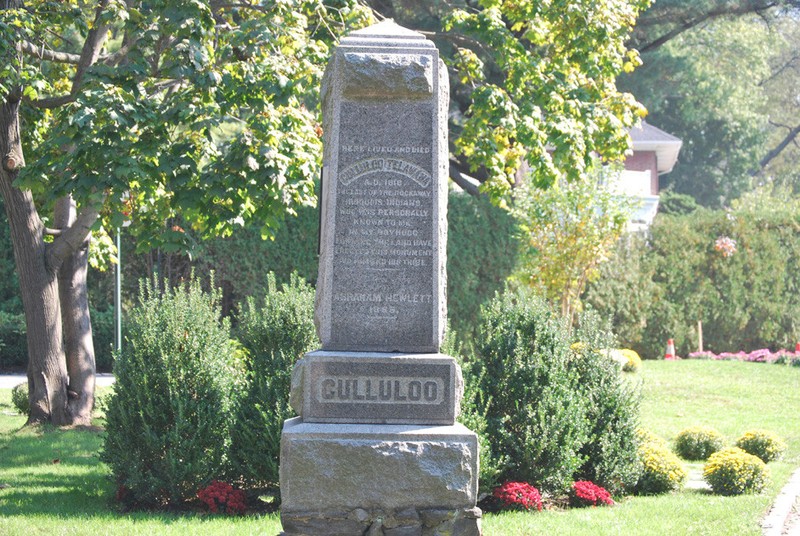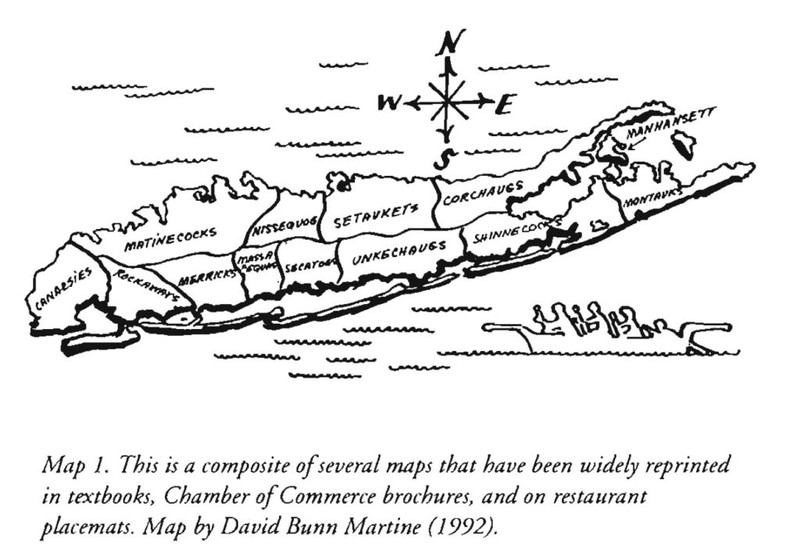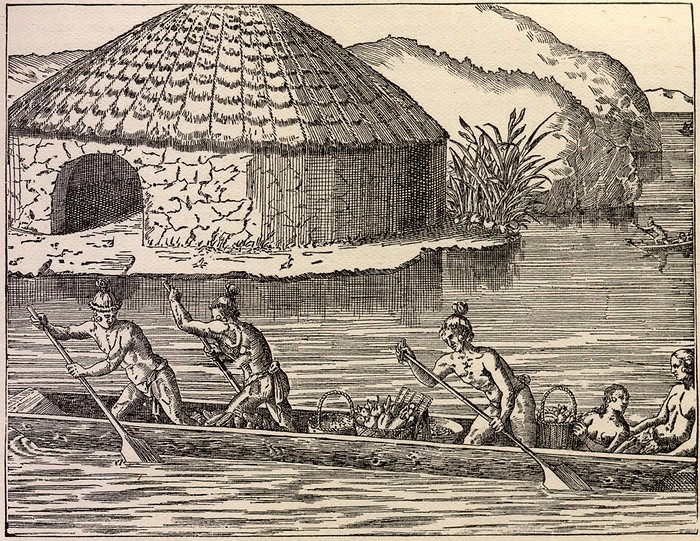Culluloo Telawaxana: Monument to the last Rockaway Indian
Introduction
Text-to-speech Audio
This monument was erected in the year 1895 by Abraham Hewlett in the memory of his boyhood friend Culluloo Telawaxana. According to Hewlett, Telawaxana’s death in 1818 marked the end of the “Rockaway Iroquois Indians.” This monument represents one of the earliest examples of the Vanishing Indian Trope, which is a recurring theme in American history. Even the name of the tribe to which Hewlett claimed Culluloo belonged underscores the mystery surrounding the Algonquin peoples, not the Iroquois as Hewlett's inscription would suggest. that inhabited this part of the New York Metro area. In fact, the land commemorated by this marker is the site of one of the most complete erasures of a native population’s culture and history committed by a combination of Dutch and English settlers.
Images
Culluloo Telawaxana's monument

Map of different tribes on Long Island

Illustrations of Native Americans of Long Island

Backstory and Context
Text-to-speech Audio
The charming tale of Abraham Hewlett and his childhood friend hides some incredibly fascinating and rather unfortunate history. According to Hewlett, a successful business man who passed away in 1888, Cullulloo was the sole surviving member of the Rockaway Indians who once lived throughout this area of Western Long Island. The young Hewlett was fascinated by the old man’s knowledge of the land and his survival skills, and developed a lifelong love and respect for him and his people; so goes the legend. However, after Culluloo’s death, in 1818, Hewlett played a central role in events that erased, or perhaps more accurately hid, the culture and history of the Indigenous people.
Who were the Indigenous peoples of this area? It is clear that Western Long Island was populated by Algonquin speaking peoples, closely related to the Lenape who are well known for inhabiting Manhattan. Native peoples in this region subsisted by hunting, fishing, and making Wampum. Wampum were traditional beads made from seashells which, were famously used as a form of currency. Before the arrival of Europeans, they were used for storytelling, gift giving and recording events.
After the early success of Henry Hudson’s voyage in 1609, the Dutch began to regularly visit and settle the area they would come to call New Netherland to trade with the Native people. The trade was so lucrative for the Dutch, and European goods so useful for the Native people, that eventually the Ducth gained economic leverage over the Algonquins. The tribes of this area eventually began to focus more of their attention on gathering furs and wampum for trade. When increased European settlement brought disease to the area, moreover, the results were devastating.
The colonization of this area did not significantly change with the arrival of the British. The world Culluloo was born into was a difficult time. The land his people would have once hunted on had long since been co-opted by Dutch and British farmers. The knowledge of how to hunt and fish in the forests of Long Island had been taught to him in a far sparser environment, by far smaller and tribal units than in 1614. Despite this decline, Culluloo was not the last of the Rockaways, who may have persisted into modern times. Well known reports of Native American whalers in the early Nineteenth century show that the Europeans were not successful at erasing Native peoples’ impact on this land.
The devastating effects of settler colonialism on Long Island certainly contributed to the plausibility of the idea of the “vanishing Indian.” The appearance of this monument itself would seem to mourn the death of a culture long gone. But this hides the truth that the Native peoples of Long Island are still here. Of course they are more visible in the East of Long Island, with tribes such as the Shinnecock Nation, but one can still feel their effect in the New York metro area, even if it is difficult to see. In this way, the Vanishing Indian Trope which is so well displayed by this monument is an extension of the early Ducth and British efforts to erase Native cultures. By bestowing upon Culluloo Telawaxana the title of “The Last”, we sever ourselves from the past and present of this land.
Sources
- “Last of the Rockaway Indians.” New York Times, December 15, 1895.
- Lynch, Thomas. 2001. "Topography, Climate, and Site Distribution for the Three Main Phases of Native American Occupation on Long Island, New York." Order No. 1406946, California State University, Fullerton. https://login.ezproxy.library.tufts.edu/login?url=https://www.proquest.com/dissertations-theses/topography-climate-site-distribution-three-main/docview/304779118/se-2.
- Otto, Paul. "Common Practices and Mutual Misunderstandings: Henry Hudson, Native Americans, and the Birth of New Netherland." (2013).
- Strong, John A. Algonquian Peoples of Long Island from Earliest Times to 1700. Empire State Books, 1997.
- Bessen, Jeff. “Woodsburgh Marks Its Centennial.” LI Herald. Herald Community Newspapers, October 11, 2012. https://www.liherald.com/fivetowns/stories/woodsburgh-marks-its-centennial,43780.
- Richter, Daniel K. Before the Revolution: America's Ancient Pasts. Cambridge, MA: The Belknap Press of Harvard University Press, 2013.
https://www.liherald.com/fivetowns/stories/woodsburgh-marks-its-centennial,43780
https://www.jeremynative.com/onthissite/wiki/the-tribes-of-long-island/
https://events.longisland.com/the-shinnecock-indians-americas-first-whalers.html
